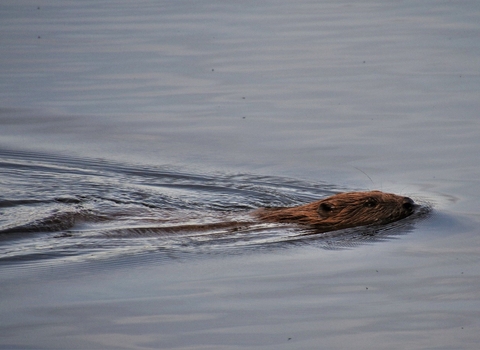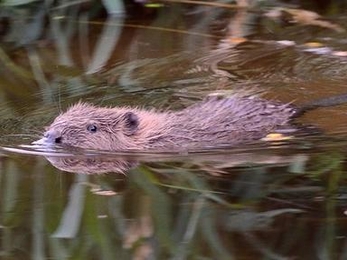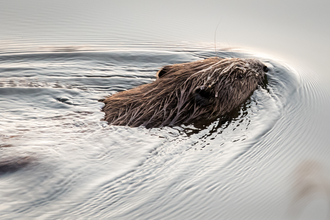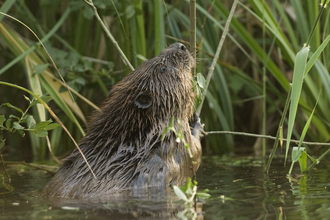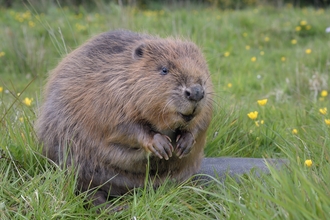Beavers
Europe’s largest rodent, the beaver is the size of a tubby spaniel. Beavers are among the world’s best natural engineers, and the dams they build divert and slow down running water, creating a mosaic of pools and marshes, wet woodland, and flooding ‘canals’ that they use to reach tasty young willow growth. Tragically, the beaver became extinct in the UK in the 16th century; hunted for their fur, meat, and for the oil in their scent glands, which was used in medicine. With the loss of the beaver, one of the great architects of the countryside, our wetlands became all the poorer. The Wildlife Trusts are at the forefront of bringing beavers back.
The beaver’s ability to create new wetlands and restore native woodland is tremendous
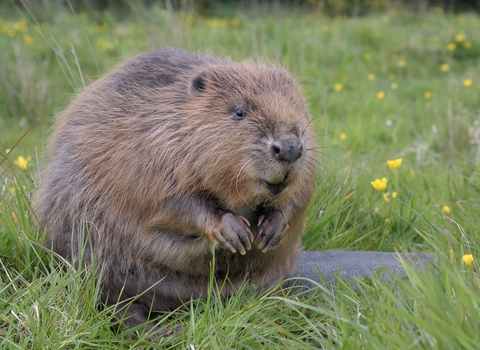
2018 - We publish a report on Wildlife Trust beaver reintroductions, detailing the movement's amazing work to bring back this once-lost mammal (image ©Nick Upton/Cornwall Wildlife Trust)
Support a national beaver strategy
Add your nameFind a beaver
The return of beavers is the first formal mammal reintroduction in UK history. Re-introduction trials and projects are underway or planned in England, Scotland and Wales. Read more about the Wildlife Trusts' beaver projects here, and find out where you can see beavers below:
Scotland
The first beavers (caught in Norway) were released in Knapdale Forest, Argyll, in May 2009. It was the first stage of a five-year reintroduction trial run in partnership between the Scottish Wildlife Trust, The Royal Zoological Society of Scotland, and the Forestry Commission in Scotland. In November 2016, the Scottish Government announced that 400 years after being hunted to extinction in the UK, the Eurasian beaver would be allowed to stay, and committed to granting beavers legal protected species status. In October 2017, a three-year reinforcement project began with the release of three more beavers into Knapdale Forest, with further releases in spring 2018. Keep up to date with the latest news from Scottish beaver project to hear about further planned releases.
A visit to the ‘beaver detective trail’ in Knapdale should reveal plenty of tracks and signs. Visit early in the morning and you may be lucky enough to see a beaver!
England
In 2011, an enclosed trial started in Devon. You can't visit the project itself without a formal invitation, but you can see them along the Rive Otter, after Devon Wildlife Trust successfully argued for a wild beaver trial when five wild beavers of unknown origin were discovered on the River Otter in 2015. The Government's original plan was to capture the animals and rehome them, but the animals are now being monitored over a five year period, after which a final decision will made on their future. We certainly hope it will be a rosy one. There is good public access along the River Otter, with evidence of the beavers’ presence along the 12 mile stretch from Budleigh Salterton to Honiton.
In Kent, beavers have been present at Ham Fen since 2001. Although the reserve is not open to the public, you can make an appointment for a group visit, and Kent Wildlife Trust runs regular guided walks, giving the opportunity to see these water engineers at work. Keep an eye out on their events page for Beaver Evening dates.
In Cornwall in June 2017, two beavers were released into an enclosure along a stream above Ladock, a village increasingly affected by flooding.
The Cornwall Beaver Project team, consisting of staff from Cornwall Wildlife Trust and Woodland Valley Farm, worked with researchers from the University of Exeter, who installed specialised equipment over a year before the beavers were in place, monitoring the flow of water through the site.
Essex Wildlife Trust has been supporting Spains Hall Estate, Finchingfield, for the past three years since their release of a pair of Eurasian beavers to a secure beaver enclosure. Read more about their project here.
Wales
The Welsh Wildlife Trusts are leading the Welsh Beaver Project and are currently investigating the feasibility of releasing beavers.
What to look out for
The young beavers, known as ‘kits’, emerge from the lodge at the end of the summer, and can be seen out and about feeding with their parents through the autumn. While they are known for eating trees, during the summer they also feed on aquatic plants, grasses and shrubs, resorting to more woody plants in the winter. The presence of beavers and their dams also improves conditions for a wide range of species including dragonflies, otters and fish, so expect plenty of other wildlife around!
If you can't get to these places
There is some great film footage of Devon’s beavers including the first wild kits! Check out the video below or see plenty more on Devon Wildlife Trust’s YouTube channel.

